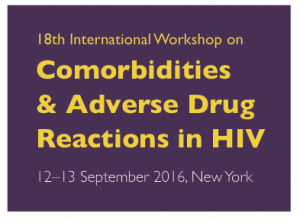Bone loss with PrEP in MSM aged 18-24
1 October 2016. Related: Conference reports, Side effects, HIV prevention and transmission, Lipodystrophy Workshop (IWADRH) 18 New York 2016.
 Simon Collins, HIV i-Base
Simon Collins, HIV i-Base
Results from an open-label study in young people using PrEP showed that its impact on bone health might be important if daily dosing is used for many years. [1]
In the short-term, the protection from HIV in this very high risk group, probably outweighs the small safety risk, but these results show the urgency of studying reduced dosing and for future PrEP options that have an even safer side effect profile. During the break between the end of the main study when PrEP was stopped and continued access to PrEP, six participants became HIV positive.
 ATN 110 was a year-long open label PrEP demonstration study to expand safety data among 200 young men aged 18-22 at 12 US sites. All participants received daily PrEP and monitoring included DEXA screens for bone mineral density (BMD) at baseline and weeks 24 and 48. Participants who either lost or failed to gain bone or who had markers of reduced renal function entered an extension phase with further DEXA scans at 24 and 48 weeks after stopping PrEP.
ATN 110 was a year-long open label PrEP demonstration study to expand safety data among 200 young men aged 18-22 at 12 US sites. All participants received daily PrEP and monitoring included DEXA screens for bone mineral density (BMD) at baseline and weeks 24 and 48. Participants who either lost or failed to gain bone or who had markers of reduced renal function entered an extension phase with further DEXA scans at 24 and 48 weeks after stopping PrEP.
Entry criteria for the extension phase included being younger than 20 with no increase in BMD or older than 20 with BMD with >1% decrease in BMD; or for all participants, a decrease of >0.5 in z-score at hip, femoral neck or spine.
Median age of the group was 20 years. More than half were black, 17% were Hispanic and 21% were white. About 80% did not always use condoms (58% not used with most recent partner) and 22% had had a previous STI. About 1 in 5 had been forced to leave home for being gay and 1 in 3 had had sex for money.
Of 200 people in the initial study, 61 discontinued before week 48 (including 4 seroconversions). Of the 135 participants with week 48 DEXA, 102 met criteria for the extension safety phase – with 101 people meeting bone criteria and 1 person for renal changes. Of these 72/102 had follow-up DEXA scans when off PrEP and 15 people had scans after continuing on PrEP.
During the extension phase, BMD at both hip and whole body steadily returned to baseline levels over the next year without PrEP. BMD at the spine quickly returned to above baseline and by week 48 were significantly higher (p=0.04).
When looking the changes in absolute Z-score over time, hip and whole body, which had both dropped significantly when on PrEP had returned after to year off-PrEP to levels that were not significantly different to pre-PrEP baseline. Z-score for spine was still significantly lower though after 48 weeks of PrEP (p=0.001).
In a small number (n=15) of men who stayed on PrEP during the extension safety phase (one of who became HIV positive), whole body and hip BMD reduced further and spine increased slightly – though none of these changes were statistically significant.
In general, participants who had greatest bone loss when on PrEP had the greatest recovery when PrEP was stopped.
There were no fractures or serious renal events during the study.
Comment
This study was important for raising the unknown implication of using tenofovir-DF by people who are young enough for their bone to still be growing.
Although the results are useful in showing a return to baseline after stopping PrEP, the high rate of new HIV infections show that this is a group who is in real need of better HIV prevention options.
PreP was only used for a year in this study, but someone this young might easily expect to continue using PrEP for 5-10 years if they continue to be at high risk, even if use is not continuous.
The post-PrEP recovery was also at a time when bone production was still active.
These and other data could perhaps be used to model the impact on BMD for 5 or 10 years if PrEP is only stopped after someone is too old for the optimal time for bone recovery.
Reference:
Mulligan K et al. Changes in bone mass after discontinuation of pre-exposure prophylaxis (PrEP) with tenofovir disoproxil fumarate/emtricitabine in young men who have sex with men who lost bone while using PrEP: extension phase results of adolescent trials network Protocol 110. 18th International Workshop on Comorbidities and Adverse Drug Reactions in HIV, 12-13 September 2016, New York. Oral abstract 001.

